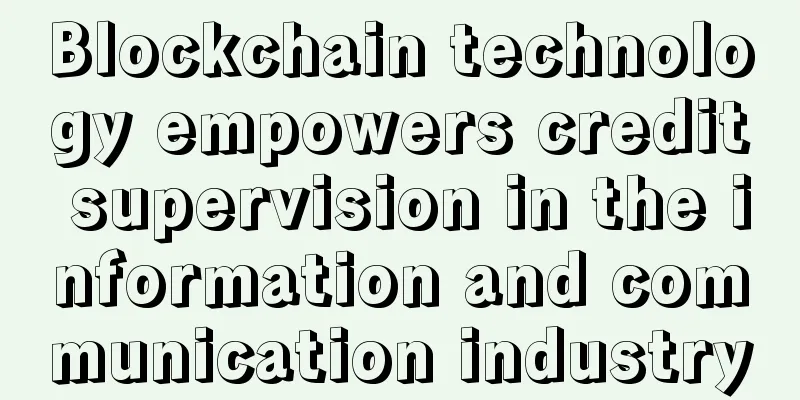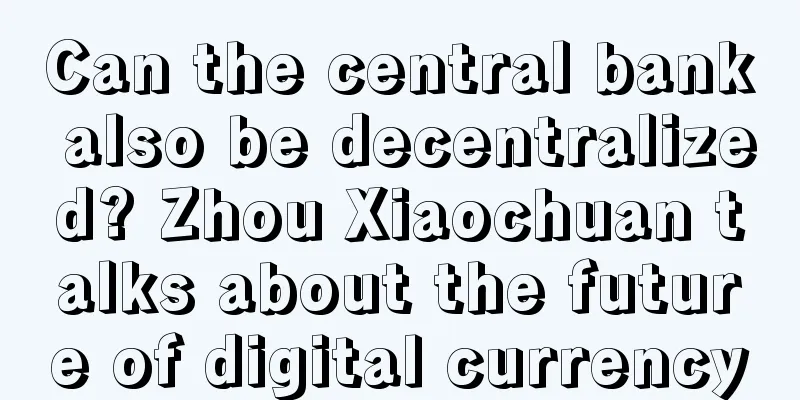|
Since the Third Plenary Session of the 18th CPC Central Committee, the CPC Central Committee and the State Council have made multiple deployments on the credit supervision mechanism as an important task to promote the modernization of the national governance system and governance capacity, providing a basic guideline for the establishment of a credit supervision system in the information and communication industry. With the gradual expansion of the application of new technologies such as 5G and industrial Internet in vertical industries, deep cross-border integration has become an important feature of the current development of the digital economy, and traditional localized and strip-based supervision is difficult to meet actual needs. The collaborative and reliable technical features of blockchain are perfectly matched with the linkage and precise management features of credit supervision, which will help realize the platformization and intelligence of credit supervision and effectively improve the efficiency of industry supervision under the new situation of digital economy. Credit supervision of the information and communication industry opens up a new situation In recent years, the information and communication industry has gradually established a credit supervision system with top-level design, technical means and supporting measures, and has basically realized a credit supervision mechanism that connects all supervision links before, during and after the event and runs through the entire life cycle of market entities.
First, the top-level system and system framework related to credit supervision have been basically established.
First, the basis of the credit supervision system has been gradually clarified. In accordance with the requirements of strengthening in-process and post-process supervision, the Telecommunications Regulations and the Telecommunications Business License Management Measures have successively revised and improved the telecommunications market supervision system, and strengthened the restraining role of the credit mechanism. On the one hand, credit status is used as one of the conditions for telecommunications business licenses, and the principle requirement of "improving the credit management mechanism" is proposed, which provides a basis for credit supervision. On the other hand, the establishment of a list of poor telecommunications business operations and a list of dishonest persons (hereinafter referred to as the "two lists") has laid the foundation for the subsequent detailed implementation of the two list mechanism.
Second, the credit files of market entities have been basically established. We have used technical means to establish an "Internet +" credit supervision platform, integrated the basic information of market entities and industry supervision information, and established a credit file that includes the business registration information, qualifications and basic business conditions provided by market entities, and the handling of illegal and irregular behaviors recorded by regulatory agencies.
Third, a joint punishment mechanism for dishonesty has been initially established. For serious dishonest entities in other industries, they will be punished in terms of information and communication industry access through a cross-departmental joint credit punishment mechanism, and included in the list of dishonest telecommunications business operators for key supervision in accordance with the two orders. According to incomplete statistics, as of now, the Ministry of Industry and Information Technology has participated in the signing of more than 30 inter-departmental joint punishment memoranda, and the scope of credit linkage covers finance, trade, public resource transactions and other fields.
Secondly, the full-process and multi-level system of the credit supervision mechanism has been gradually improved.
First, in the pre-regulatory link, the credit commitment mechanism is explored and operated. According to the requirements of the State Council's "license and license separation" reform deployment, the Ministry of Industry and Information Technology has carried out a pilot program of notification and commitment approval for Class II value-added telecommunications business related licensing matters in 18 free trade pilot zones. The notification and commitment is a preliminary application based on credit risk assessment. The entities that have been included in the two lists will not be accepted for approval applications, and those that meet the approval conditions will be approved on the spot, which reduces the license application time by two months compared with the general procedure.
Second, in the process of supervision, credit supervision and key supervision are gradually connected. On the one hand, credit records are used as one of the regulatory bases, and the inspection objects with bad credit records are subject to more spot checks, and the proportion and frequency of spot checks are increased. On the other hand, the results of special inspections of various businesses will be included in the credit records. For example, the special rectification of apps infringing on user rights and interests and the special rectification of broadband monopoly in commercial buildings organized by the Ministry of Industry and Information Technology in 2020 require enterprises that have been administratively handled and punished in accordance with the law to be included in the list of poor telecommunications business operations or dishonest companies, depending on the circumstances.
Third, in the post-event supervision link, the role of the social supervision mechanism has become apparent. As of October 2020, the Ministry of Industry and Information Technology has successively announced 13 batches of bad and dishonest lists, of which 35,000 companies were included in the bad list and 3 companies were included in the dishonest list. The establishment of the two-list mechanism has received widespread attention from the society, and the positive guidance and persuasion effect on bad companies has gradually emerged. Credit supervision in the information and communication industry faces new challenges In the era of digital economy, product forms are diversified, industrial organizations are networked, and market competition is complex. How to integrate regulatory resources more efficiently, how to control regulatory costs more effectively, and how to maximize the application capabilities and implementation efficiency of credit information have become major challenges.
Basic credit information is incomplete. The responsible entities for digital economy integration business are scattered, and different regulatory fields lack vertical and horizontal sharing methods. Regulatory agencies and market players need to repeatedly accept information, which increases regulatory costs and the time and management costs of market players in responding to supervision.
Insufficient application of credit information. Currently, the application of credit information focuses more on the supervision during and after the event, lacking the application of ex ante credit assessment. It is difficult to identify market entities with higher credit risks during the access stage, which increases the subsequent supervision costs.
Insufficient credit supervision capabilities. Currently, the sharing and circulation of credit information mostly requires manual reporting, which objectively results in time lags, and the data synchronization capabilities need to be improved, which also affects accuracy. Blockchain technology provides new possibilities for improving credit supervision efficiency Blockchain is essentially a distributed data system participated by multiple entities. It has the characteristics of distribution, transparency, traceability, tamper-proof, and trustlessness. It provides new solutions for the sharing, application, and security of credit information.
Distributed storage technology ensures the coordination and mutual trust of credit information. Blockchain supports the co-construction and sharing of credit information, which can solve the problem of "information islands" that the social credit system has long faced and ensure the integrity of credit information.
Smart contract technology ensures the initiative of credit information application. Blockchain can automatically complete the credit information application process and automatically trigger the execution of credit information application measures through mathematical algorithms, making it easier for regulatory authorities to proactively and accurately implement credit supervision.
Anti-tampering technology ensures efficient and reliable transfer of credit information. Blockchain ensures that the recording process is one-way, irreversible and cannot be forged, which helps improve the efficiency of information entry and reduce the difficulty and cost of manual review.
The "blockchain + credit supervision" model makes full use of the characteristics of blockchain technology, helps to ensure the security and reliability of credit data, achieve the goal of co-governance of credit supervision, and further promote the precision and intelligence of credit supervision in the information and communication industry.
Realize pre-credit assessment and early warning. In the pre-entry stage, through the information and communication industry credit management system and other industry credit sharing systems, multi-dimensional "credit portraits" of market entities and main operators are portrayed, so as to achieve the connection between license approval and actual credit level.
Ensure the credibility of credit records during the process. In the process of recording, the credit management system is put on the chain, and each record of illegal and irregular disposal is filed and traced, so that it can be checked, verified and traced. The credit status of market entities is dynamically evaluated through intelligent algorithms, classified and graded according to relevant standards, and differentiated supervision measures are implemented in a timely manner.
Improve the effectiveness of post-event credit punishment. In the post-event application stage, by putting the credit sharing system of various industries on the chain, support cross-regional, cross-departmental, and cross-level data exchange and information sharing, realize the automatic triggering and execution of multi-party joint punishment measures, and enhance the strength and deterrence of credit punishment. |










